 Back to selection
Back to selection
The Ten Best TV Shows of 2013
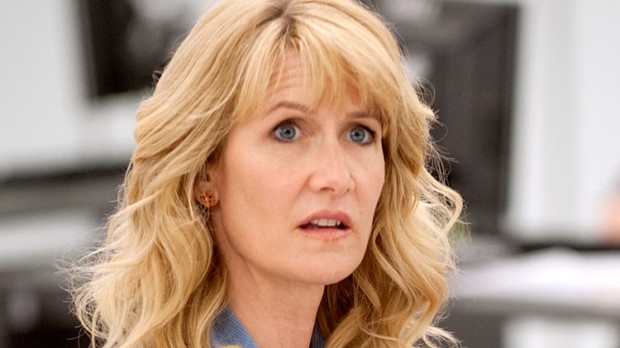 Laura Dern in Enlightened
Laura Dern in Enlightened 2013 has been a tough year to sum up for television.
If it could be characterized by one trend, it would likely be the sheer glut of content being produced. With more cable channels investing in their own programming, as well as the long-promised rise of online networks such as Netflix and Amazon, it often feels like you can’t go a week without hearing about a new buzzed about, “best series on television.” Add to that the increased presence of international series on American screens (thanks to the likes of Hulu, DirecTV, BBC America, and the Sundance Channel, among others), and it becomes even harder to determine which shows were truly worth investing in.
But with the quantity of content growing, is quality on the rise as well?
The short answer is — probably not.
Production values are clearly higher than ever, with shows looking increasingly cinematic, drawing in name actors and established directors, and expanding rapidly in scope and budget.
But more and more, The Walking Dead seems to be the most influential show on television — a wildly popular, blood-soaked piece of genre ambition, heavy on action and impressive set pieces, with each season playing out like a 13-hour blockbuster. But while The Walking Dead and its many offspring pulse with a well-crafted sheen, these shows lack the richness of theme and character that first defined the “television golden age” of the ’00s. Masterpieces like The Sopranos, The Wire, Deadwood, and more recent examples like Mad Men and Breaking Bad utilized genre — the western, the crime drama, the mob story — but as backdrop against which to explore deeper questions about human nature. The more recent crop of prestige series (The Walking Dead, Homeland, Boardwalk Empire, Justified, Game of Thrones) wear big themes on their sleeves, but often seem more invested in providing water-cooler twists than anything else.
One would hope that the rise of online television could help offset this increased Blockbusterization, but we’re still, at best, several years away from the web reaching its commercial and artistic potential. Yes, Netflix established itself in a big way in 2013, but with one exception (more on that below), the network played its programming incredibly safe, pouring money and energy into the tepid, tired House of Cards (a series that often felt like the product of a robot programmed to write a pay cable drama), and the near-unwatchable fourth season of Arrested Development. (Seriously, what happened there?) To be sure, there are low-budget gems to be found across the Wild West of the web (to name a few — High Maintenance, Catherine, Ghost Ghirls, and F to 7th), but the playing field is not yet set up — financially or artistically — to support truly ambitious storytelling.
I hesitate to sound like too much of a downer. Because, as always, more content being produced means more diamonds in the rough. And indeed, tucked away within the TV landscape are some truly adventurous, exciting works being produced. Series that are interested in pushing the form forward, that challenge, engage, and sometimes even purposefully repel viewers. That signal exciting times still ahead.
Here are the ten best series I watched in 2013:
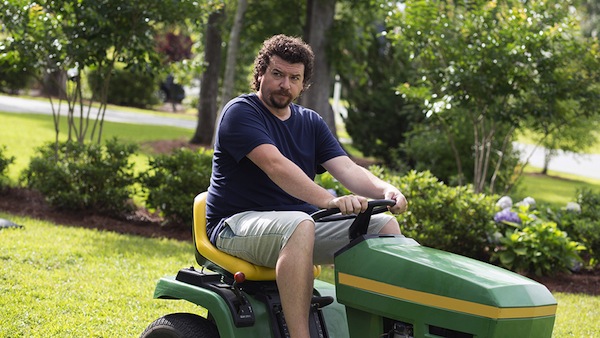
10. Eastbound and Down
Last year, both Eastbound and Down and its main character Kenny Powers managed to fake their own deaths, only to be resurrected for one final go-around this past Fall. And while last year the prospect of a fourth season of Jody Hill and Danny McBride’s comedy of excess might have felt like a case of an overstayed welcome, Eastbound turned in one of its strongest seasons to date (surpassed only by the show’s debut year, still the closest the U.S. has come to the brilliance of the U.K. Office).
So what made Kenny Power’s (second) swan song work? For one, the show found the perfect post-baseball career for its lead. Where previous seasons found Kenny masquerading as everything from a substitute gym teacher to a mMxican cockfighter, no lifestyle proved a more ingenious choice for McBride’s headstrong John Rocker-stand-in than a sports television personality. Kenny Powers as commentator on a Sports Center-esque testosterone-fest was such a perfect fit, in fact, that it’s remarkable it took so many seasons to arrive at. Through this new gig, Kenny Power’s singular brand of deranged narcissism reached new heights, providing the show ample opportunities to skewer the petty macho-ism of the inherently ridiculous cable sports news genre.
In its final year, the show continued to refine its dual strengths – emotional sincerity and abject absurdity. By stranding Kenny Powers in suburbia, the show dug into his marriage to April (Katy Mixon), wrestling with the question of whether such a larger-than-life figure could ever succeed at something so mainstream as “settling down.” But lest you think the show got overly sentimental in its old age, the final season also provided a steady stream of midgets, jet packs, dancing robots, excessive drug use, and Steve Little’s increasingly grotesque sidekick Stevie to keep things weird.
Oh, and plenty, plenty of fixings.
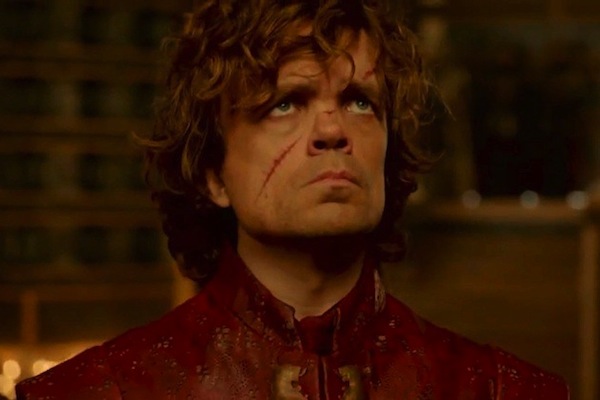 9. Game of Thrones
9. Game of Thrones
Game of Thrones is an easy show to take for granted. Sure, it’s not rich in thematic subtext like the great HBO dramas of the past. But for three years now, the show has expertly pulled off as impressive a juggling act as I’ve seen on the small screen. The action spans dozens — if not at this point hundreds — of characters, across a myriad of plot lines and locations. Nearly every actor is perfectly cast (seriously, the folks in the casting department deserve a trophy), and the myriad plotlines flow together in an unending and graceful balancing act.
Season 3 — which covered the first half of A Storm of Swords, George R.R. Martin’s third novel in the series, did a better job with this than ever before. Increasingly, the action felt holistic and tied together, even with characters spread across different continents. When the season reached its dramatic peak with the instantly iconic Red Wedding, the reverberations were felt across the entire landscape of the series.
And though the show often felt pulled in many directions, creators David Benioff and D.B. Weiss were wise enough to know when to slow the action down for big moments, whether they be action-packed or emotional. This year that meant the spectacle of Danaerys’ overthrowing of Astapor or the aforementioned epic brutality of the Red Wedding. But it also meant Tyrion’s drunken displays of frustration on his wedding night, or, the crowning achievement of the season, the carefully plotted redemption of Jaime Lannister. Indeed, Jaime, portrayed with increasing soul by Nikolaj Coster-Waldau, transformed across the season’s ten episodes from an antagonist defined by stock menace to a great tragic figure. With so many balls in the air, a lesser series would have rushed through this transformation. Somehow, Game of Thrones found time to get it right.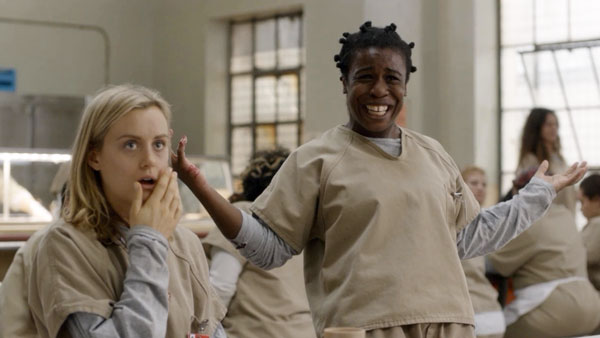
8. Orange is the New Black
What made Orange is the New Black an especially good fit for Netflix’s patented ‘binge-watching’ business model was the way that the show slowly revealed its full scope and intricacies over the course of its first season. Judging from the show’s pilot, Black seemed a rather reductive, overly-cute “fish out of water” dramedy catered to an affluent, Caucasian crowd. But as the season developed, so did the show’s scope, diversity, and overall dramatic ambition.
For an example of this slow burn, look at show’s arc for prison guard Healy (Michael Harney), a character who starts the series as a much-needed ally for recently incarcerated protagonist Piper (Taylor Schiller). Around the midpoint of the season, Healy’s over-the-top fear of homosexuality within the prison gates is dropped into a scene as slightly-off-kilter comic relief. But by the end of the season, the show has developed this seemingly throw-away thread into a troubling psychological profile for the character, believably transforming him from ally to antagonist.
Or check out the character of Crazy Eyes, who starts the season as what is a essentially a horror movie monster (because that’s how we — and Piper — view her at first). By Episode 12, she has transformed into the series’ unexpected but fully realized beating heart..
But it’s not that the show started weak, silly, or unambitious and somehow happened upon depth as the season drew on. No — the depth was always there. The strength of Orange is the New Black‘s first season was the way in which it peeled back layers to reveal something rich, complex, and unexpected where we assumed there would only be pleasant diversion.
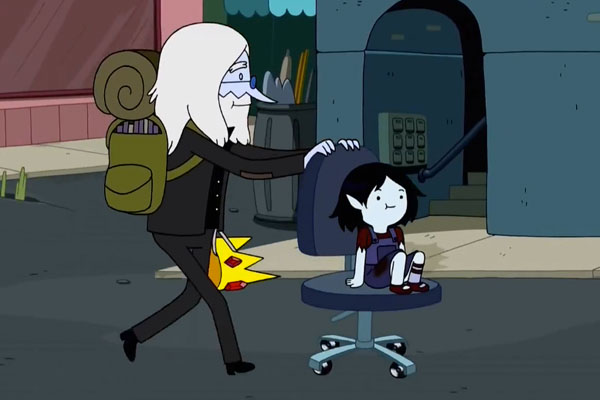
7. Adventure Time
In “Root Beer Man,” the most recent of 38 new Adventure Time episodes to air in 2013, the show pulled a Zeppo, introducing the titular sentient soft drink, a resident of the show’s Candy Kingdom who spends his days working middle-management at a call center and his nights sneaking out of bed to work on his perennially unfinished mystery novel. The episode recasts Finn and Jake, the show’s usual-protagonists, as supporting characters, expands the show’s universe, provides a clever spin on the noir genre, inverts Adventure Time‘s usual structure and introduces Anne Heche as a sexually-frustrated Cherry Cream Soda. Not bad for 11 minutes.
Five years in, Adventure Time (my pick for the best show of last year) continues to find clever ways to deepen with age. This season that meant an increased focus on world-building, whether by dedicated more episodes to supporting characters or by further exploring the series’ dark and often-hinted-at apocalyptic past (as within the stellar ‘Simon and Marcy,’ an episode focused around the show’s most tragic relationship, which just happens to be between a wizard and vampire).
And when the series did center on Finn and Jake, episodes dealt with the ways our two protagonists are changing. Finn, now deep into the throes of puberty (voice actor Jeremy Shada was 12 when the show started and has aged along with his character) dealt with his developing sexuality and his first breakup, while Jake, a considerably older character, adjusted to fatherhood and reevaluated his extended-adolescence.
And of course, there were still heaps of stylistic experiments and complete curveballs thrown into the mix. From a near-silent episode (“Shh!”), to a gender-bending sequel to Season 3’s “Fiona and Cake,” to an episode in which the show’s animation was literally ripped apart from the inside (‘A Glitch Is a Glitch’), Adventure Time continued to retain its singular mindfuckery in 2013, even while aging gracefully.
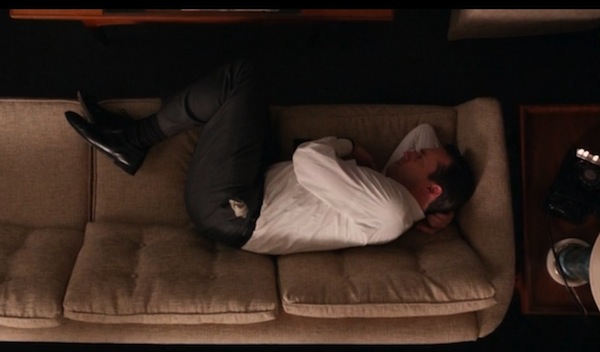
6. Mad Men
This quote from Alan Sepinwall’s Mad Men Season 6 post-mortem with series creator Matthew Weiner stuck with me. When asked if Don Draper’s season-ending epiphany would stick, Weiner replied:
“We always take very seriously the consequences of the actions of the show… I will not pretend like it didn’t happen. Will he pretend like it didn’t happen? I don’t know.”
That seems a fairly crucial statement. Like its thematic predecessor The Sopranos, Mad Men is a show fascinated with change. It challenges the viewer to question whether change is possible on both a small and massive scale. Can a man unlearn the behavior rooted into him in childhood? How much can society accomplish over a decade, or even over half a century? Do we simply rearrange, recast, and replay the same injustices, inequalities, and ills down through the generations?
While the potential to learn from one’s past is left knowingly ambiguous within the Mad Men universe, Weiner and his team have never been more attuned to the show’s own history. Indeed, many of the season six’s main arcs played out like knowing retreads of things we’ve seen many times before. Don carrying on yet another reckless affair, passively pushing towards another dissolved marriage; Harry haplessly jockeying for more respect in the office; Peggy carrying on an ill-conceived office romance. All this has happened before — the only things that have changed are the year on the calendar and how weary the participants look.
Season 6 was the year of Bob Benson (James Wolk) — a smile and a haircut and the lack of a unique personality. At times Benson seemed like a human stand-in for the series’ own history, meant to recall all at once the early days of Don’s transformation from Dick Whitman, the unbridled ambition of Season 1 Pete, and even the hidden menace of Joan’s Vietnam-bound ex-husband. In short, Benson was a living time capsule, the earlier incarnation of a repetition that the series’ characters still find themselves within.
So, is change possible? Knowing Weiner, it’s doubtful that Mad Men‘s final season will provide a definitive answer to this central question. But based on the show’s ever-deepening sense of self, it’s sure to continue asking it in the most fascinating ways possible.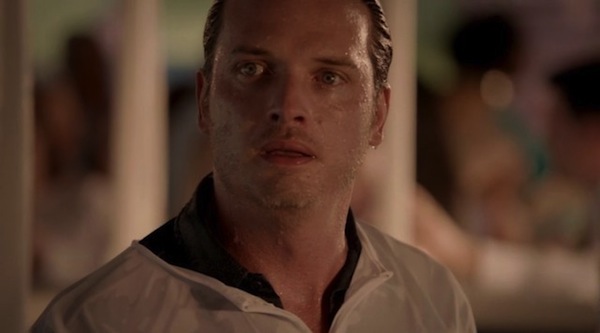
5. Rectify
Anyone who’s interested in the future of television should be paying attention to what’s happening right now on the Sundance Channel. In 2013, cable giants AMC, HBO, and FX are investing less and less in the genuinely daring, challenging content they made their names on, and are instead focusing their budgets and energies on glossy, cinematic (and, yes, often entertaining) pulp. Meanwhile, Sundance, a channel that has been around for years, but has never launched an original series until now, became home to three of the year’s most distinctive and daring series. Two of them co-productions with international broadcasters (Jane Campion’s gorgeous, haunting Top of the Lake miniseries, and the deceptively clever French zombie drama The Returned). The third is the network’s first wholly original series: Ray McKinnon’s Rectify.
Rectify follows Daniel Holden (Aden Young), a death-row inmate in Georgia convicted of the rape and murder of his girlfriend. As the pilot begins, Daniel is being released from prison after decades of incarceration, as new DNA evidence has vacated his original trial. From here, the show unspools slowly, each of the first season’s six episodes following a day in Daniel’s life as he struggles to reconnect with his family, adapt to the free world, and settle back into a town where he has become a pariah.
The show’s most distinctive quality is its restraint. Rather than bleed melodrama from Daniel’s return to society, McKinnon and his team relish in subtly, striking a Southern Gothic tone akin to the films of Terence Malick or David Gordon Green. Entire episodes will center around Daniel digging through his childhood room, or wandering around the town he never thought he’d get to see again. The cinematography is lush, and Young’s performance strikes a subtle balance between detached, soulful, and vaguely menacing.
As the show’s too-brief first season concludes, the initial mystery (“did Daniel commit the crime he was imprisoned for?”) becomes less and less the source of the show’s drama. Instead, both Daniel and the series have developed an interest in the possibilities of redemption. Without ever letting us too close into its protagonist’s fractured mind, the show depicts Daniel’s increasingly intense struggle for internal salvation, at times dipping into the wholly expressive and surreal to do so.
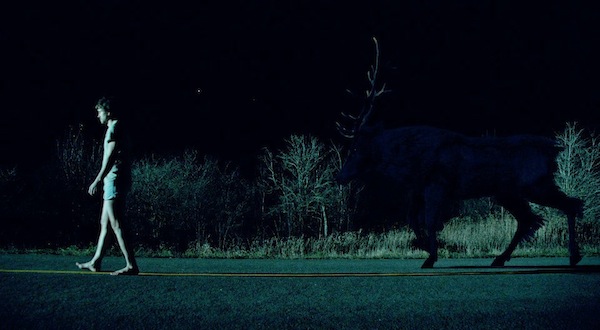
4. Hannibal
There’s a very obvious narrative problem with the concept of the “prequel” — viewers are already spoiled as to how the damn story is going to end.
Is it really worth three movies and however many hours to watch little Anakin Skywalker transform into Darth Vader? Once we’ve been to Mordor, does anyone really give a damn about Bilbo and a bunch of dwarves fighting a dragon?
Bryan Fuller’s Hannibal, easily the most daring and inventive show to air on network television in years, brainstormed several rather ingenious solutions to this quandary. First, recast Anthony Hopkins’ larger-than-life villain as the ever-restrained Mads Mikkelsen. Second, strand this titular character as a supporting player in his own series, who, even though we all know he’s a monster from the get-go, doesn’t even commit an onscreen act of violence until halfway through the first season. Third — and most important — replace any and all tension with a prevailing sense of dread.
This isn’t a needlessly grotesque “viewer discretion advised” network procedural, where the audience is rewarded for enduring boatloads of gore at episode’s end with a closed case and a simplistic view of good and evil. No, this is disconcerting stuff. Episodes will feature our leads dining alongside Mikkelsen’s Lector, cluelessly enjoying what are almost certainly human remains (no “I’m eating WHAT???” moment has arrived thus far). Episodes will feature non-stop score from start to finish, lending the show the quality of a 44-minute horror movie build with no resolve. And episodes will luxuriate in Freudian symbolism and extended dream sequences, often intentionally blurring the line between reality and hallucination.
By the time the series’ first season has wrapped, we are no longer concerned with how this origin story will lead to the events of Red Dragon or The Silence of the Lambs. Instead, Fuller has created something all his own — a work so unnerving on a moment-to-moment basis that there’s no time to fret about what the future holds in store.
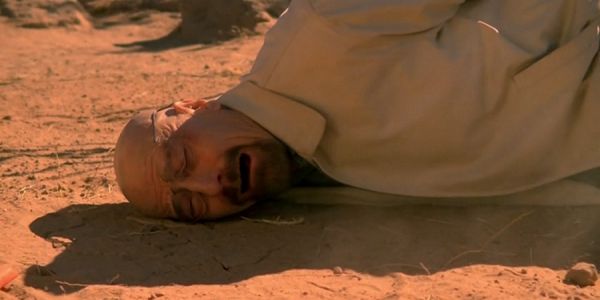
3. Breaking Bad
So let’s get this out of the way early — Breaking Bad, one of the greatest television dramas of all time, botched its landing. It shit the bed. How else can I put this? It broke bad.
After an almost flawless five-season run, the series’ final episode was an uncharacteristically simplistic affair, so tonally inconsistent with everything that came before that it felt like Vince Gilligan and his team had handed the key to the writers’ room over to protagonist Walter White. The whole thing played out like the end of a Bruce Willis thriller, its lead glorified to the point of superhero-dom, and the show’s finely-tuned moral ambiguity wholly abandoned.
So why then, does the show still earn a place so high on this list? Because everything up until that final episode was So. Damn. Perfect.
Breaking Bad‘s final season cleared the playing field down to a few key characters, accelerated the action in unexpected ways, and ratcheted the tension to new — at times nearly unbearable heights. The cat-and-mouse game between Walt and his brother-in-law DEA Agent Hank Schrader (Dean Norris) had been slow-burning for the series’ entire run, and in the final episodes, it resembled a long, agonizing chess match.
When that game finally did come to its conclusion in “Ozymandias,” it did so in startlingly brutal fashion. Indeed, it’s hard to not see “Ozymandias” (which Gilligan refers to as the series’ best episode) as the true finale to Walter White’s story. The episode walks a tighter tightrope than ever before in depicting Walt’s dual personalities — sympathetic family man and brutal egotist. As the show’s world crumbled around him in wonderfully apocalyptic fashion, Cranston’s Walter White wielded a kitchen knife in one last desperate bid to keep his family together. At this moment, the show achieved its true catharsis, just a few episodes too early.
Because, this was never a series where “Who was the ricin for?” or, “How will Walt outsmart the Nazis?” were the most important questions being asked. This was a series about one man’s slow moral rot, that, in its best moments, begged the viewer to ask him or herself, “At what point do you stop rooting for this hero?”
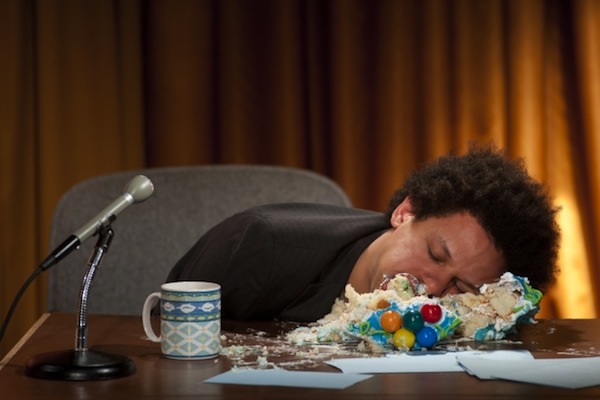
2. The Eric Andre Show
I can’t be the only one who feels like Adult Swim’s The Eric Andre Show has tapped directly into the strangest recesses of my brain and vomited the contents out onto my television screen, can I? Imagine Un Chien Andalou as a talk show, El Topo starring Jay Leno, or Inland Empire filmed in front of a live studio audience, and you’ll start to understand the beautiful clusterfuck that is The Eric Andre Show.
There’s a reason Louis C.K. cast David Lynch last year as the man behind the curtains of the late night talk show tradition. It’s because the format is one of our country’s most bizarre cultural institutions, brimming with decades-old rituals — the opening monologue, the in-house band, the celebrity interview, the wacky newspaper headline — that make little sense when viewed in the abstract. Instead, when combined and regurgitated night after night, these traditions start to resemble the prayers one might say before bedtime — a calming repetition that takes us from one day into the next.
Eric Andre is here to explode that repetition, and he’ll do so by any means necessary. Have someone drive a motorcycle into his desk while he’s interviewing Downtown Julie Brown? Check. Murder his co-host mid-monologue before descending into a pitch-perfect homage to the Twin Peaks theme song? Sure. Run screaming through the streets of New York for a rousing game of “punch a stranger in the face?” Why not?
If you think this all sounds like weirdness for weirdness’s sake, it is. But Andre plays weirdness like it’s life or death — a last grasp for sanity within a format where the normal is completely absurd.
This is apparent right from the onset. Each episode begins with an otherwise unheard narrator announcing in his best Ed McMahon voice, “It’s the Eric Andre Show!” As the in-house band queues up the muzak, Andre storms into the studio like a wild animal, screaming and attacking anything in his path. He tackles his drummer, lights himself on fire, breaks desk after desk after desk. Finally, he collapses into his chair as if he’s been through this a million times before, panting with exhaustion.
Next, his set rebuilds itself behind him, co-host Hannibal Burress emerges with a vacant smile on his face, and the crowd’s canned applause signals the start of that night’s opening monologue. The show must go on, the show can’t go on, the show’ll go on.

1. Enlightened
In an early episode of this year’s second and final season of Mike White’s Enlightened, the focus shifts from Laura Dern’s Amy Jellicoe to her ex-husband Levi (Luke Wilson). Half-heartedly confronting his substance abuse issues at the same clinic where Amy had previously had a life-changing spiritual awakening, Levi finds himself adrift amongst fellow addicts, unable to give himself over fully to the program’s New Age principals and belief in a higher power. Levi teeters over the edge of relapse throughout the episode before finally finding a source of strength to continue striving for sobriety. In a letter to Amy, he writes, “I don’t believe in much, but I believe in you… Maybe you’re my higher power.”
The irony — well, I hesitate to use that word in relation to this show; let’s say the ‘ambiguity’ — is that by this point in the series, we’ve gotten to know Amy Jellicoe pretty well. We know that one of her most grating traits is her god-complex. Amy is quick to view herself as a savior, but it’s clear that her acts of charity are as much driven by self-gratification as they are by genuine altruism. Another thing Amy lacks is a decent poker face, so this god complex has been entirely clear to those around her, and even to Levi, since episode one. And yet Levi, himself a deeply flawed, often difficult character, is still able to find genuine hope in Amy. She still makes him a better person.
A few episodes later, Levi, back from rehab, surprises Amy at the worst possible moment, just as she is about to meet her new flame (played by the always dependable Dermot Mulroney). Whereas a lesser series would play up the soap opera tensions inherent in this scenario (“Will Amy’s new guy see her with her old one?! Who will break whose heart?”), Enlightened takes a different route. All of the drama that has been building within the season’s main storyline is put on pause as Amy and Levi reconnect. The two walk together through a park, Levi trying his hardest to express his newfound optimism, and Amy trying her best to remain guarded. They talk about aging, about disappointments they’ve long since given up on fixing, and about whether its possible or plausible that at this point in their lives they could ever find peace in one another. The camera lingers on Dern and Wilson’s faces. They both express these emotions quietly and leisurely, as if they’ve been swimming in them their entire lives.
In the end, it’s not hard to see why HBO brought the axe down on Enlightened, even amidst impassioned critical outpouring. This was a terribly unhip show (and yes, a terribly rated one as well). A show about cautious optimism; about deeply flawed people struggling to make themselves better. A show without a high-concept genre hook or barely a single cast member under the age of 40. A so-called “comedy” that was more often than not content to luxuriate in deep melancholy. It was unlike anything else on the small screen in 2013, and it’ll be a long while before we see its kind again.
